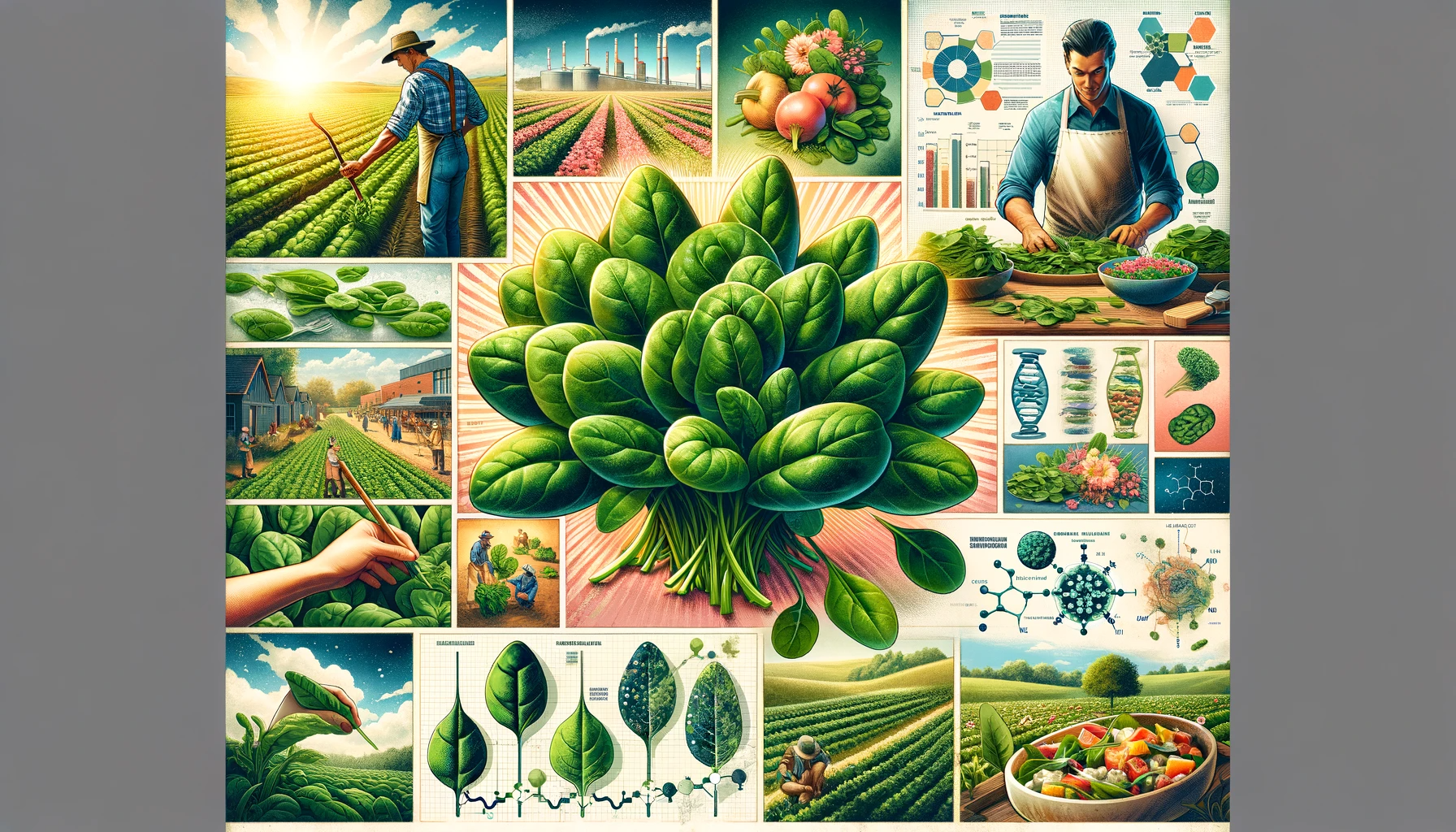Spinach, with its vibrant green leaves and numerous health benefits, has been a staple in culinary traditions worldwide for centuries. But have you ever wondered where this versatile leafy green originated from? In this article, we’ll take you on a journey through time to explore the fascinating history of spinach, from its ancient beginnings to its place on modern dining tables.
Early Beginnings: Spinach in Ancient Civilizations
Ancient Persia: The Birthplace of Spinach
Spinach has a long history that can be traced back to ancient Persia, modern-day Iran. It was known as “aspanākh” in Persian, which eventually evolved into the word “spinach” that we use today. The cultivation of spinach in Persia dates back over 2,000 years, making it one of the oldest known cultivated greens.
Arab Influence: The Spread of Spinach
During the Arab conquests in the 7th century, spinach found its way into various parts of the world, including Mediterranean regions and Spain. The Arabs greatly valued spinach for its nutritional properties, and it soon became popular in the cuisines of the Mediterranean and North Africa.
Renaissance and Europe: Spinach’s Journey Westward
Renaissance Europe: Spinach’s Revival
Spinach made its way to Europe in the 12th century, thanks to the Moorish influence in Spain. However, it wasn’t until the Renaissance era that spinach gained popularity in Europe. It was initially used as a decorative plant in European gardens before becoming a staple in European cuisine.
Catherine de’ Medici and Spinach in France
Spinach truly flourished in France during the 16th century, thanks to Catherine de’ Medici, the Italian-born Queen of France. She loved spinach and introduced it to the French court, where it became known as “the Queen’s vegetable.” French cuisine embraced spinach in various dishes, including the famous “Creamed Spinach.”
Spinach in America: From Immigrants to Popeye
Spinach in the United States
Spinach arrived in the United States in the late 19th century, brought by Italian immigrants. It gained popularity quickly, and by the early 20th century, it was featured in comic strips as a symbol of strength and vitality.
Popeye the Sailor Man
One of the most iconic moments in spinach’s history is its association with the fictional character Popeye the Sailor. Created by E.C. Segar in 1929, Popeye gained superhuman strength by consuming spinach. This popularized spinach as a symbol of health and strength, further boosting its consumption.
Modern-Day Spinach: A Culinary Superfood
Nutritional Benefits of Spinach
Today, spinach is celebrated not only for its delicious taste but also for its exceptional nutritional profile. It’s packed with vitamins, minerals, and antioxidants, making it a true superfood. Spinach is a rich source of iron, folate, vitamin K, and fiber, making it a valuable addition to a healthy diet.
Culinary Versatility
Spinach is incredibly versatile in the kitchen. It can be used in salads, sautéed as a side dish, blended into smoothies, or incorporated into various recipes such as quiches, pastas, and soups. Its mild flavor makes it a favorite choice for adding greens to a wide range of dishes.
Conclusion: Spinach’s Timeless Appeal
From its ancient origins in Persia to its prominent place on modern dining tables, spinach has come a long way. Its journey through time is not just a story of a culinary ingredient but also a testament to its enduring popularity and health benefits. Whether you enjoy it in a classic salad or as a part of your favorite recipe, spinach continues to be a beloved and nutritious addition to our meals.
Incorporating spinach into your diet not only connects you to centuries of culinary history but also provides a delicious and healthy way to support your well-being. So, the next time you savor a bite of spinach, remember the rich history and global journey of this humble yet extraordinary leafy green.
Remember, spinach is more than just a vegetable; it’s a symbol of resilience and a testament to the enduring appeal of natural, nutritious foods. Enjoy your spinach and its timeless legacy on your plate!
